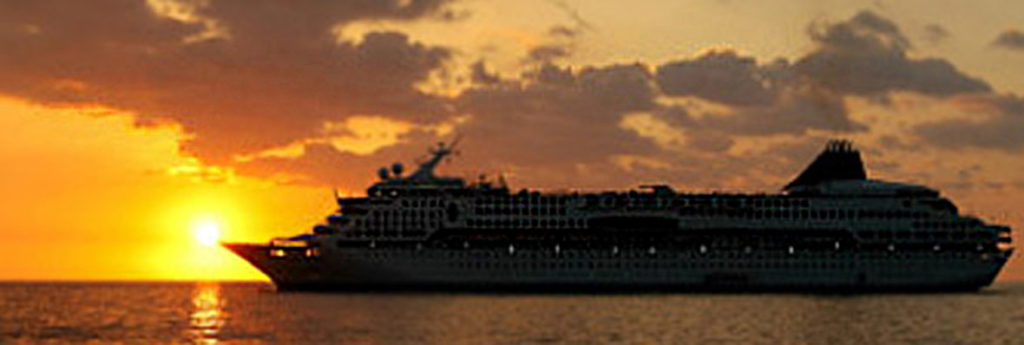With 32 million passengers preparing to cruise in 2020 and 19 new ships set to sail for the first time – adding to global fleet of over 260 vessels – there is much ado in the cruise industry for the upcoming year. As is customary at this time of year, we’ve collected some thoughts and predictions about an industry that had a total economic output of $150 billion in 2018 and is set to ride that tidal wave even further in the future.
At the forefront of the trends list, according to the Washington DC-based Cruise Lines International Association (CLIA), the world’s largest cruise industry trade organization, is the ongoing commitment to responsible tourism practices.
“While demand for cruising has reached new heights, the cruise industry is accelerating our efforts to be a leader in responsible tourism,” says Kelly Craighead, president and CEO of CLIA. “Our members are at the forefront of best practices designed to protect the sanctity of the destinations we visit and enhance the experiences of travellers and residents alike.”
To that end, the cruise industry is investing $22 billion in the development of new energy efficient technologies, partnerships with local governments in key destinations, and a commitment to reducing its rate of carbon emissions by 40 percent by 2030 compared to 2008.
“We recognize that with growth comes increased responsibility to raise the bar in all aspects of what we do to ensure cruising remains a force for good and the best way to experience the world,” says Craighead.
Based on its research, as detailed in its recently released 2020 State of Cruise Industry Outlook report, CLIA lists the following trends (in addition to environmental sustainability and related destination stewardship):
⦁ Cruise and Stay: More travellers are spending time in and near cruise ports. In fact, 65 percent of cruise passengers spend a few extra days at embarkation or debarkation ports.
⦁ Generation Cruise Positive: The attitude around cruising is changing, no matter the generation. More than 66 percent of Generation X and 71 percent of Millennials have a more positive attitude about cruising compared to two years ago.
⦁ Lone Cruisers: Marriage rates are declining and the number of single adults is growing globally. As a result, cruise lines are responding to the shift in passenger demographics by offering studio cabins, single-friendly activities, eliminating single supplements and solo-lounges.
⦁ Micro Travel: Trip durations are continuing to change, with many travellers looking for quick trips. Cruise lines are offering bite-sized cruises over a three-to-five-day period offering shorter itineraries to a variety of destinations.
Meanwhile, online cruise marketplace CruiseCompete, which counts 750-plus travel agencies among its 1.3 million members, offers its own top three “noteworthy trends” for 2020:
⦁ Expansion and Innovation: Many of the cruise lines are employing a “bigger is better” philosophy, building ships that have amenities that rival their on-land counterparts’ finest amenities. For example, Royal Caribbean debuted the world’s largest cruise ship, the Symphony of the Seas, in 2018 featuring robot bartenders, a water slide with a 27-metre drop, and a nine-story zipline. In 2021 the Wonder of the Seas will set sail from Shanghai and feature the line’s seven-neighbourhood concept and the ultimate in features and amenities.
⦁ Expedition Ships Scale Down: There’s a new generation of yacht-like expedition ships hitting the water, and this cruising niche is flourishing because seasoned travellers are looking for unique, intimate destinations and, to get there, cruise ships must be able to navigate smaller bodies of water.
⦁ Great Lakes Cruising: Continuing a surge in interest for domestic cruising, as evidenced by the popularity of US river cruise lines such as American Queen Steamboat Co. and Blount Small Ship Adventures, the Great Lakes are another domestic cruising destination gaining momentum. They are easily accessible from both Canada and the US and many ports, including Chicago, Cleveland and Detroit, are seeing a rebirth that’s worth exploring.
For its part, MSC Cruises focusses specifically on passengers in its trends outlook. Among the key elements of the line’s just-released report, “The Future of the Guest Experience,” are:
⦁ Data ID Wallets, where technology will enable delivery of a hyper-personalized level of service and tailor each point of the guest experience as brands get to know their guests more intimately through disclosed personal preferences. MSC already offers a highly personalized experience with ZOE, the world’s first virtual personal cruise assistant.
⦁ Elastic Entertainment will bring new realities (AR, VR and XR) to the forefront of entertainment on board to elevate traditional forms of leisure.
⦁ Repurposed Resorts will be the coveted destinations –
areas that have been transformed by once-derelict spaces, boosting local economies and turning them into unique and sustainable travel hot spots, like Ocean Cay MSC Marine Reserve, where MSC Cruises transformed a former sand extraction site into a flourishing marine reserve.
⦁ Subconscious Design – Technologies on ships and in resorts will respond to guests’ moods and needs to alter their environments to improve a guest’s emotional state.
⦁ Anthropo-tainment – human-centric entertainment that is accessible to all ages, genders and nationalities and breaks down linguistic barriers to place people at the heart of the show – will rise in popularity.
“One of the challenges of the cruise industry is that we need to design and build new ships that will still be cutting-edge for our guests 30 years from now,” says MSC Cruises’ executive chairman Pierfrancesco Vago. “As such, innovation and consumer trends are at the very core of our DNA and we need to have a strong and clear vision for the future… Through intelligent innovation and design, with strong commitment to sustainable travel, we will be able to facilitate all kinds of future experiences.”

